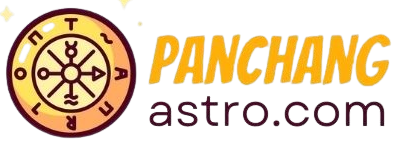Decoding the Chinese Birth Chart: A Guide to Predicting Baby’s Gender
Introduction:
The Chinese Birth Chart, also known as the Chinese Gender Predictor or Chinese Gender Chart, is an ancient method used to predict the gender of an unborn baby. This traditional tool has been relied upon for centuries in Chinese culture, and it continues to fascinate and intrigue people around the world. In this article, we will delve into the history and usage of the Chinese Birth Chart, explore its accuracy, and provide a step-by-step guide on how to use it. Additionally, we will address some frequently asked questions to help you better understand this intriguing method of predicting a baby’s gender.
The History and Background:
The Chinese Birth Chart is believed to have originated during the Qing Dynasty in China, over 700 years ago. It was discovered in a royal tomb and is said to have been based on ancient Chinese philosophy and the Yin-Yang principles. The chart was initially used only by the royal family, but over time, it became accessible to the public.
How Does it Work?
The Chinese Birth Chart is based on the lunar calendar and the mother’s age at the time of conception. To use the chart, you need to know the mother’s lunar age (which is different from her actual age) and the month of conception. The chart consists of rows representing the mother’s age and columns representing the month of conception. By intersecting these two factors, the predicted gender of the baby can be determined.
Decoding the Chart:
To predict the gender of your baby using the Chinese Birth Chart, follow these simple steps:
Step 1: Determine the mother’s lunar age at the time of conception. The lunar age is calculated by subtracting the mother’s birth year from the year of conception and adding one. For example, if a woman was born in 1988 and conceived in 2022, her lunar age would be 35.
Step 2: Identify the month of conception. The Chinese Birth Chart uses the lunar months, so it is essential to convert the Gregorian calendar month to the corresponding lunar month. Many online converters are available for this purpose.
Step 3: Locate the intersection of the mother’s lunar age and the month of conception on the chart. The symbol at the intersection will indicate the predicted gender of the baby – either male or female.
Accuracy and Reliability:
While the Chinese Birth Chart has gained popularity worldwide, its accuracy remains a subject of debate. Some claim that it predicts the baby’s gender with a high level of accuracy, while others dismiss it as mere folklore. Scientifically, there is no evidence to support its effectiveness, as it lacks a logical or biological basis. However, many parents-to-be still use it for fun or as a cultural tradition.
Frequently Asked Questions (FAQs):
Q1: Is the Chinese Birth Chart accurate?
A: The accuracy of the Chinese Birth Chart is questionable as it lacks scientific evidence. Some claim it to be accurate, while others dismiss it as a myth or coincidence. It is best used for entertainment purposes rather than relying on it for making important decisions.
Q2: Can the Chinese Birth Chart be used to predict the gender of multiple pregnancies?
A: Yes, the Chinese Birth Chart can be used for multiple pregnancies. However, it is important to remember that the chart is based on probabilities and does not guarantee accurate predictions for every pregnancy.
Q3: Can the Chinese Birth Chart be used for IVF pregnancies?
A: Yes, the Chinese Birth Chart can be used for IVF pregnancies. The month of conception is still relevant, regardless of whether conception occurs naturally or through assisted reproductive techniques.
Q4: Are there any other methods to predict the baby’s gender?
A: Yes, there are various methods used to predict a baby’s gender, including ultrasound, genetic testing, and old wives’ tales. It is important to consult with medical professionals for accurate and reliable information regarding the baby’s gender.
Conclusion:
The Chinese Birth Chart continues to captivate people’s interest with its ancient origins and supposed ability to predict the gender of an unborn baby. While its accuracy is debated, many parents-to-be enjoy using it as a fun and cultural tradition. Whether you believe in its predictions or not, the Chinese Birth Chart remains an intriguing part of Chinese folklore and adds a touch of excitement to the journey of pregnancy.
